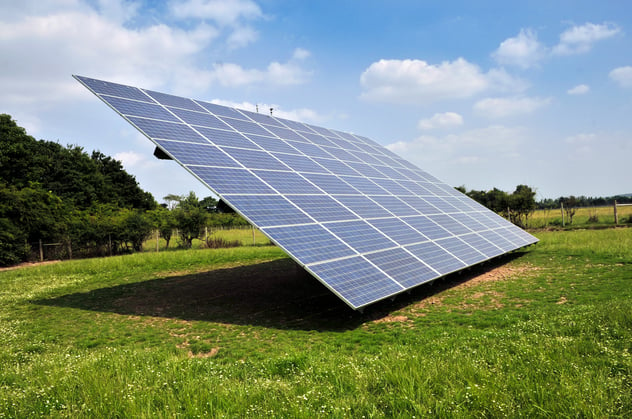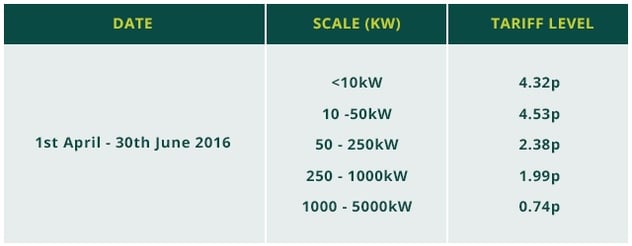
In December of last year, the long awaited announcement from the Department of Energy and Climate Change (DECC) regarding their Feed-In Tariff (FIT) review, was revealed.
Days after agreeing to move to a low-carbon energy future at the climate change conference in Paris, the DECC, announced its decision to decrease the FIT from the 15th January 2016.
While this decision has received mixed reactions, “most of the new tariffs provide for a higher rate of return than previously consulted on and, in most cases, the level of support has increased beyond levels proposed,” said DECC in their report.
The new rates
The FIT you receive is determined by the size of the system that you’ve installed and the extent of usage on your site. Once your system has been registered on the Central Fit Register (CFR), you’ll continue to receive the same rate for 20 years, plus any retail Price increase review. Future changes to the FIT won’t affect you.
These are the FIT rates available until 30th June 2016:

Based on a 50kW PV system.
In addition to the FIT rates above, you would also receive an additional 4.91p/kw for each kWh of electricity not used and exported to the National Grid.
Alternatively, for each kWh of electricity generated and used on site you would save the cost of importing electricity. If your import rate is 12p/kWh, you would save this amount as well as receiving a payment of 4.53p/kWh.
Quarterly deployment caps were introduced on 8th February, but as uptake was very low for the last quarter, Feed in tariffs have only been reduced by a very small amount.
If you're considering renewable technologies for your business, it is also worth keeping in mind that degression rates mean that a minimum of 2.5% is taken off the tariffs every quarter - but don't worry because once you have secured your tariff it is guaranteed and indexed linked for 25 years.
The effect on your business
Since the introduction of the Feed-In Tariff, there have been numerous subsidy changes, but despite these, the renewable energy sector, including the Solar PV industry is stronger than it has ever been.
If you are a business that already uses renewable energy, be it solar, wind, hydro or any other form – you will not be affected by these changes and don’t need to worry.
If you are a business that is looking to make an investment, you don’t need to be concerned either. While there has been a reduction in Feed-In Tariff rates, you’ll still be saving money in the long term through reduced electricity bills.
Plus, the change in Feed-In Tariff for businesses doesn’t affect your ability to get your green credentials and hit those all-important CSR goals, which add value to the image of your brand.
Looking for further assistance?
If you still have unanswered questions about the Feed-In Tariff for businesses, please don’t hesitate to get in touch with us today.



